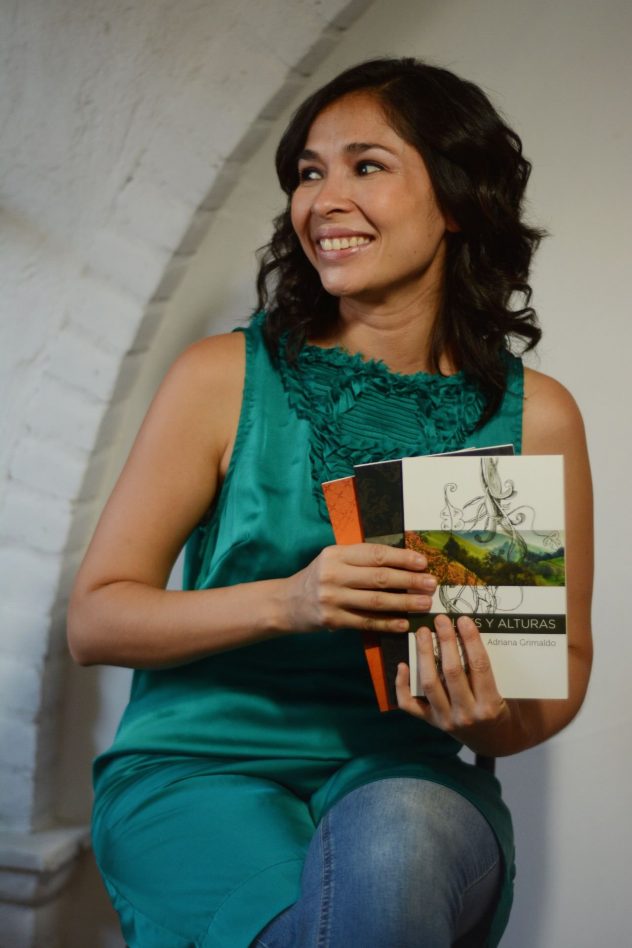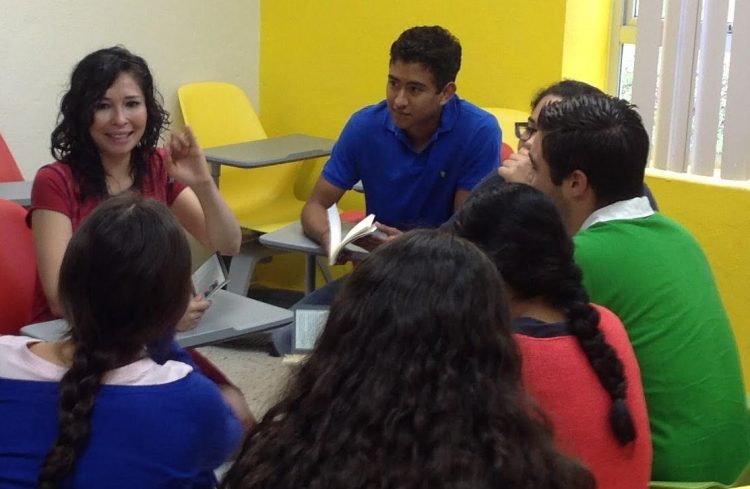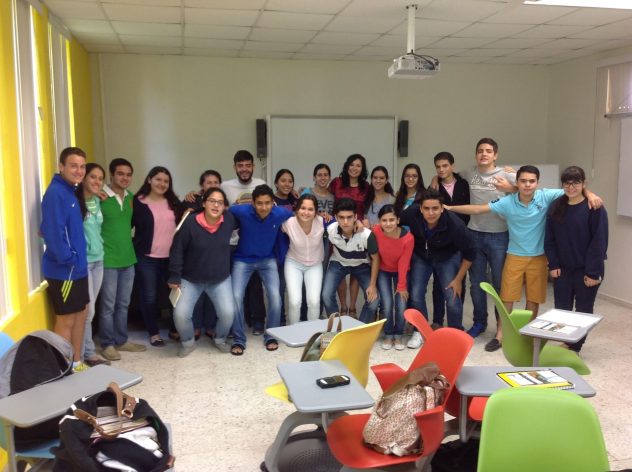 By Adriana Grimaldo (Author, Educator, Graduate Student)
By Adriana Grimaldo (Author, Educator, Graduate Student)
In my experience, the profession of writing has to do with the ability to transform a series of images in our mind into words. It might sound crazy but, when I wrote Valles y Alturas, De Noche and Viento Austral, I had the feeling that I was seeing the characters acting in front of me performing all kinds of actions that then I just needed to write down. The mental images that accompanied me through the writing process were as clear, real, and vivid as you and I.
I have a lot of experience teaching Ethics to teenagers. Before writing my novels–and having not yet heard about Imaginative Education–I was invited to participate in the writing of an Ethics textbook. While the textbook had greatly developed concepts and content, it had little to no use of imagery. (I am not referring to illustrations but, rather, mental images that arise in our minds from words). I finished it feeling somehow uneasy, as if predicting the teachings of that book would never appear in the minds of the teenagers when they faced a situation that required them to make a decision based on Ethics. I was concerned. If Ethics is a fully practical subject, why was I writing a book that taught it from a theoretical point of view and had no emotional connection whatsoever?
My response to this concern led me to the work of Dr. Kieran Egan and the pedagogical approach to teaching he has developed called Imaginative Education.
The lightbulb in my head lit up when I started to understand how to employ the cognitive tools (e.g. mental imagery, metaphor, the story-form etc.) at the heart of this approach! Imaginative Education offered me the resources I needed to approach adolescents and talk to them about what making decisions parting from Ethics meant in practical life.

Among other texts from Dr. Kieran Egan, the one I am citing next gave me the answer as to how I should address teenagers:
Image is the most powerful form of mind-to-mind communication. I am not talking about illustrations. We live in a world saturated by illustrations. On the contrary, I am referring to images created in the mind as an effect of words. Consider the difference between reading a novel and then watching the movie derived from that story. The emotional strength of the movie is almost always more potent than the images generated in the mind of the reader by his/her reading of the novel. That ability to generate images from words is a great stimulus for imagination and a powerful learning tool. If I asked you to remember the most important moment in your life, you would surely bring to mind a series of images. Those images would not be mere frames in your mind; they would be infused with emotions.
[1] Source: Egan, K. (June 2013). La imaginación: una olvidada caja de herramientas del aprendizaje. PRAXIS Educativa, XVI(14), pp. 12-16. (Emphasis mine).
Presently, whenever I have the chance to visit a school after students have read my novels, I can verify the strong effect of using the cognitive tools. I can confirm, with great satisfaction, that those who have read my novels have appropriated a series of mental images and metaphors that make up the plot of the adventures the characters live while trying to grow up and be the best version of themselves.
What helps me sleep quietly at night is the hope that my students will remember and, with some luck, will decide to put into practice the advice–hidden in the form of metaphors–that are in my novels. Imaginative Education explains why certain cognitive tools stimulate students’ emotions and imagination while they read my stories. All teachers can employ these tools to bring their subject-matter alive.
Imaginative Education offers a variety of possibilities for its application, all related to respecting our natural learning process. Personally, Imaginative Education interests me because I now know how to put my mind into communication with the mind of adolescents in a significant way.
[1] Kieran Egan’s article was written specifically for the cited magazine. For this article, the quotation has been translated into English from a translation into Spanish of the author’s original draft, to which this translator did not have access.
About The Author
Adriana Grimaldo (Coahuila, México, 1983) believes words are probably the best of humanity’s creations. With them, we do not only connect with the world, but we can share our inner world with others.
Adriana is a lover and an admirer of words: she utters them, learns them, listens to them, reads them, and writes them. Thanks to words, Adriana has been able to communicate with teenagers through her novels: Valles y Alturas [Valleys and Heights], De Noche [At Night] and Viento Austral [Austral Wind], in which she has described, metaphorically, the stages of life. After her novels are read in schools, Adriana visits classes to give workshops and listen to the readers’ reflections. Contact Adriana here: [email protected]


